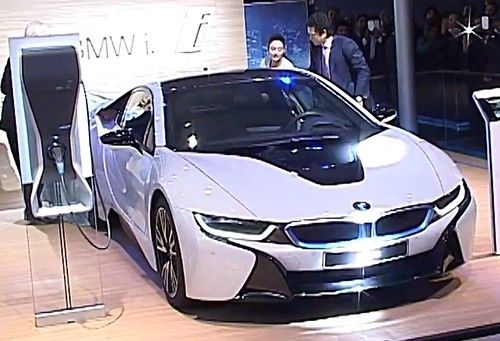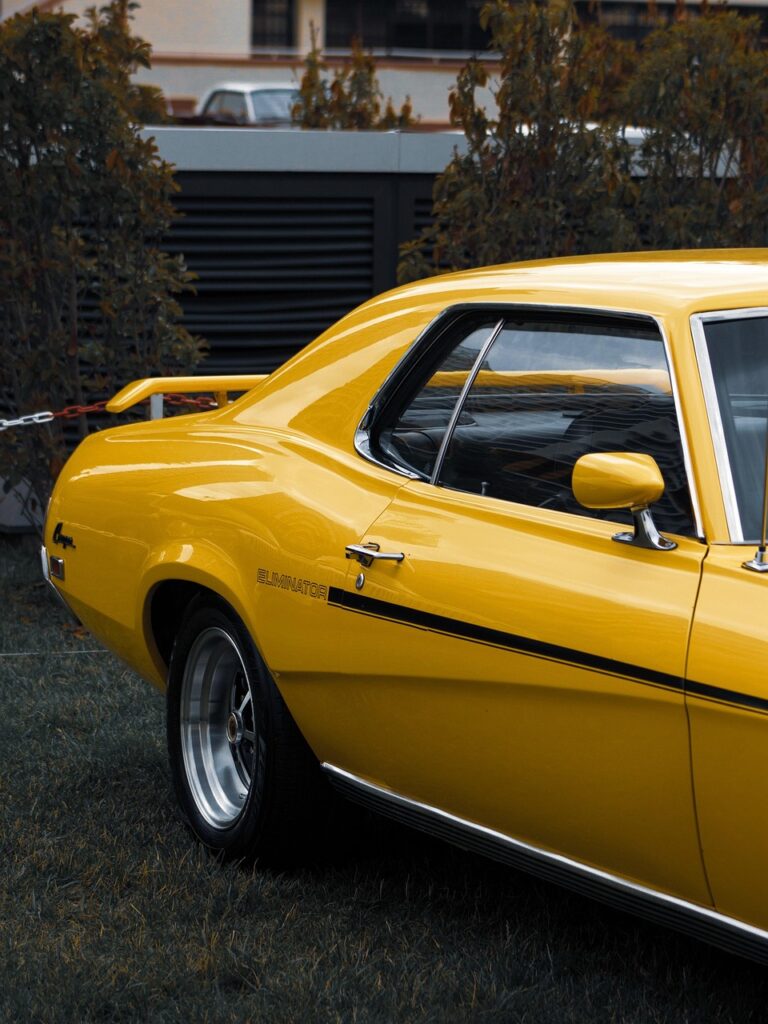
In the fascinating realm of classic automobiles, the allure of owning a piece of history can be incredibly powerful. Enthusiasts and collectors often dream of acquiring vintage beauties, believing them to be sound investments that appreciate over time, offering a unique driving experience unmatched by modern machinery. However, the open road to classic car ownership is not always paved with gold; sometimes, it leads directly to a mechanical money pit. Many older vehicles, from once-celebrated muscle cars to ambitious luxury attempts, have seen their values plummet, becoming more of a liability than a treasured asset.
This isn’t about shaming automotive history; it’s about providing a clear-eyed, expert-backed evaluation for those considering dipping their toes into the classic car market. With extensive automotive knowledge, test data, and seasoned car journalists’ expert opinions as our guide, we’re peeling back the veneer of nostalgia to reveal the cold, hard truths. While some iconic models remain highly desirable, others simply haven’t aged well, plagued by inherent design flaws, questionable engineering, and performance metrics that fail to justify their current market value, or even their original asking price.
We’ve consulted a roster of automotive experts, scrutinizing their insights and extensive experience to identify those classic cars that, despite their legacy or initial promise, just aren’t worth the cash today. Our journey will highlight vehicles notorious for everything from dire safety concerns to severe mechanical headaches, demonstrating why some seemingly attractive investments are best admired from a distance. Let’s delve into the first half of our list, examining these classic contenders that have, unfortunately, lost their shine in the eyes of informed collectors and keen enthusiasts alike.

1. **Ford Pinto (1971-1980)**The Ford Pinto, produced from 1971 to 1980, remains a cautionary tale in automotive history, especially when considering classic car investments. For a vehicle, its primary purpose is safe transport, and the Pinto notoriously fell short. Erin Kemp, a consumer advocate for Bumper, starkly articulated this sentiment, stating that the “Pinto is well-known for its unsafe design — the uncovered fuel tank was prone to bursting in rear-end crashes, making it a risky choice for collectors.” This inherent safety flaw far outweighed any potential financial benefit an owner might have hoped to gain from its compact, economical stature.
Beyond its safety notoriety, the Pinto’s overall build quality and performance were, to put it mildly, subpar. The 1974 model, for instance, came equipped with a 2.3L four-cylinder engine that churned out a mere 88 horsepower. This lack of power, combined with rudimentary engineering, meant the driving experience was far from inspiring, even for its era. The car was primarily designed as an economical option, yet its compromises were profound, affecting everything from reliability to long-term structural integrity.
Kemper further elaborated on the Pinto’s fate, noting that “Despite Ford’s later adjustments, most Pintos rusted or were discarded, leaving just a few around today.” This high attrition rate, driven by both mechanical failures and corrosion, means that while fewer exist, their scarcity doesn’t necessarily translate into increased value. Instead, the lingering stigma of its safety record and fundamental design weaknesses ensure that the Ford Pinto remains firmly on the list of classic cars that are simply not worth the investment, serving as a stark reminder that some historical vehicles carry too much baggage.
Car Model Information: 1978 Ford Pinto RUNABOUT HATCHBACK
Name: Ford Pinto
Caption: Ford Pinto
Manufacturer: Ford Motor Company
Aka: Mercury Bobcat
Production: September 1970 – July 1980
ModelYears: 1971–1980 (Pinto),1974–1980 (Bobcat)
Assembly: Edison, New Jersey,Milpitas, California
Designer: Robert Eidschun (1968)
Class: Subcompact car
BodyStyle: Sedan (automobile),sedan delivery,station wagon,hatchback
Related: #Mercury Bobcat (1974–1980),Ford Mustang (second generation)
Layout: Front-engine, rear-wheel-drive layout
Chassis: Unibody
Engine: unbulleted list
Abbr: on
Disp: Ford Cologne engine
Transmission: unbulleted list
Wheelbase: 94.0 in
Length: 163 in
Width: 69.4 in
Height: 50 in
Weight: convert
Predecessor: Ford Cortina#Mark II (1966–1970)
Successor: Ford Escort (North America)
Categories: 1980s cars, Articles with short description, Cars discontinued in 1980, Cars introduced in 1970, Commons category link from Wikidata
Summary: The Ford Pinto is a subcompact car that was manufactured and marketed by Ford Motor Company in North America from 1970 until 1980. The Pinto was the first subcompact vehicle produced by Ford in North America.
The Pinto was marketed in three body styles throughout its production: a two-door fastback sedan with a trunk, a three-door hatchback, and a two-door station wagon. Mercury offered rebadged versions of the Pinto as the Mercury Bobcat from 1975 until 1980 (1974–1980 in Canada). Over three million Pintos were produced over its ten-year production run, outproducing the combined totals of its domestic rivals, the Chevrolet Vega and the AMC Gremlin. The Pinto and Mercury Bobcat were produced at Edison Assembly in Edison, New Jersey, St. Thomas Assembly in Southwold, Ontario, and San Jose Assembly in Milpitas, California.
Since the 1970s, the safety reputation of the Pinto has generated controversy. Its fuel-tank design attracted both media and government scrutiny after several deadly fires occurred when the tanks ruptured in rear-end collisions. A subsequent analysis of the overall safety of the Pinto suggested it was comparable to other 1970s subcompact cars. The safety issues surrounding the Pinto and the subsequent response by Ford have been cited widely as business ethics and tort reform case studies.
Get more information about: Ford Pinto
Buying a high-performing used car >>>
Brand: Ford Model: Pinto
Price: $18,995 Mileage: 88,217 mi.
Read more about: Millennials Skip These 7 Classic Boomer Cars: Unpacking the Generational Divide in Automotive Taste

2. **Ford Mustang II (1974-1978)**Often burdened with the unenviable title of the “worst Mustang ever,” the Ford Mustang II, spanning from 1974 to 1978, represents a particularly challenging chapter in the iconic pony car’s lineage. This model was an attempt by Ford to adapt to the 1970s design trends and the constraints of the fuel crisis, but in doing so, it severely compromised the very essence of what made a Mustang desirable. It was, as described in the context, a “far cry from its predecessors, featuring a smaller, less powerful engine and a design that failed to capture the muscle car essence.”
Erin Kemp’s assessment echoes this sentiment, remarking that the Mustang II Cobra II (a specific 1977 variant) “simply does not measure up” to the excitement of earlier Shelby Mustangs. Kemp specifically highlighted its “poor performance and style that falls short of rivals such as Pontiac or Dodge,” unequivocally suggesting that enthusiasts should “explore elsewhere for a vintage muscle car investment.” The criticism was pointed, noting its lack of speed and an “unattractively bulky” build, which directly contradicted the sleek, potent image of its predecessors.
Delving into the engineering, the 1978 Ford Mustang II, for instance, typically featured a 2.3L four-cylinder engine that produced a meager 88 horsepower. Even when considering its efforts to capitalize on the muscle car era, the car’s driving dynamics and power output were fundamentally underwhelming. Coupled with being “plagued with quality control issues,” the Mustang II became a prime example of a vehicle where cost-cutting and market misinterpretation led to a product that, despite its badge, offered little in terms of performance, engineering prowess, or lasting collector appeal. Collectors, as the context states, “often pass it by,” and for good reason: it’s a classic in name only, failing to deliver on the promise of its heritage.
Car Model Information: 2022 Hyundai PALISADE Calligraphy
Name: Second generation
Caption: Ford Mustang II coupe
Aka: Ford Mustang II , Ford T5 (in Germany)
Class: Pony car,Subcompact car
Production: 1973–1978
ModelYears: 1974–1978
Predecessor: Ford Mustang (first generation)
Successor: Ford Mustang (third generation)
Assembly: Unbulleted list
Layout: Front-engine, rear-wheel-drive layout
BodyStyle: coupé,hatchback
Related: Ford Pinto,Ford Pinto
Manufacturer: Ford Motor Company
Engine: ubl
Transmission: ubl
Wheelbase: cvt
Length: cvt
Width: cvt
Height: cvt
Designer: Buck Mook, Dick Nesbitt
Categories: All articles with dead external links, All articles with unsourced statements, Articles with dead external links from April 2024, Articles with permanently dead external links, Articles with short description
Summary: The second-generation Ford Mustang, marketed as the Ford Mustang II, is a two- or three-door, four-passenger, front-engine/rear-drive pony car manufactured and marketed by Ford from 1973 until 1978. Introduced in September 1973 for the 1974 model year, the Mustang II arrived roughly coincident with the oil embargo of 1973 and subsequent fuel shortages. Developed under Lee Iacocca, it was an “entirely new kind of pony car.” Ford “decided to call it Mustang II, since it was a new type of pony car designed for an era of high gas prices and fuel shortages.”
The Mustang II was 490 lb (222 kg) lighter and almost 19 in (483 mm) shorter than the 1973 Mustang, and derived from the subcompact Pinto platform. While sharing a limited number of driveline components with the Pinto, the Mustang II employed an exclusive subframe, isolating its front suspension and engine mount subframe. The steering used a rack-and-pinion design.
Named Motor Trend’s 1974 Car of the Year and reaching over 1.1 million sales over four years of production, the Mustang II is noted simultaneously for both its marketing prescience and strong sales – while criticized as having abandoned essential aspects of the Mustang heritage and described, in a retrospective after 40 years since its introduction, as embodying the Malaise era.
Get more information about: Ford Mustang (second generation)
Buying a high-performing used car >>>
Brand: Ford Model: Mustang II
Price: $34,194 Mileage: 37,781 mi.
Read more about: From Anemic to Awkward: Unmasking 15 Muscle Cars That Truly Missed the Mark – And Why We Can’t Forget Them
3. **DeLorean DMC-12 (1980-1981 / 1982)**The DeLorean DMC-12, instantly recognizable for its stainless steel body and gull-wing doors, is undeniably iconic, primarily due to its starring role in the “Back to the Future” films. This association has imbued it with a powerful sense of nostalgia, driving up its perceived value for some. However, as car experts frequently point out, the cinematic magic doesn’t translate into automotive excellence or a sound investment. Joe Giranda, director of sales and marketing at CFR Classic, candidly stated that its “build quality and performance drag down its worth.”
Mechanically, the DeLorean was a significant letdown. Giranda emphasized that the “underwhelming PRV V6 engine makes just 130 horsepower,” a figure that was modest even for its time, especially for a vehicle positioned as a futuristic sports car. Early production models were “plagued with reliability issues,” transforming the dream of owning a unique vehicle into a mechanical “headache that rarely matches its inflated price tag.” The high initial cost, coupled with persistent problems, meant the DMC-12 struggled to deliver on its promise of innovation and performance.
Despite its striking aesthetics, the unique features that defined the DeLorean often came with their own set of challenges. The stainless steel body, while visually distinctive, required specialized maintenance, and the complex gull-wing doors could be prone to issues. As the context notes, these distinctive elements “couldn’t compensate for its poor performance and build quality.” Therefore, while its place in pop culture is secure, the DeLorean DMC-12 remains a testament to how poor engineering and reliability can overshadow even the most extravagant designs, making it a poor choice for anyone looking for a mechanically sound or appreciating classic car investment.
Car Model Information: 1982 Delorean DMC-12
Name: DMC DeLorean
Alt: 1983 DeLorean
Caption: 1983 DeLorean
Manufacturer: DeLorean Motor Company
Production: January 21, 1981 – December 1982
ModelYears: 1981–1983
Assembly: Dunmurry
Designer: Giorgetto Giugiaro
Class: Sports car
BodyStyle: coupé
Layout: Rear-engine, rear-wheel-drive layout
Doors: Gull-wing doors
Engine: 2.85 L
Abbr: on
Powerout: 130 hp
Transmission: 5-speed manual ,3-speed automatic
Wheelbase: 2413 mm
Length: 4267 mm
Width: 1988 mm
Height: 1140 mm
Weight: 1233 kg
Sp: us
Categories: 1980s cars, All Wikipedia articles written in American English, Articles with short description, Automobiles with backbone chassis, Automobiles with gull-wing doors
Summary: The DMC DeLorean is a rear-engine, two-seat sports car manufactured and marketed by John DeLorean’s DeLorean Motor Company (DMC) for the American market from 1981 until 1983—ultimately the only car brought to market by the fledgling company. The DeLorean is sometimes referred to by its internal DMC pre-production designation, DMC-12, although this was not used in sales or marketing materials for the production model.
Designed by Giorgetto Giugiaro, the DeLorean is noted for its gull-wing doors and brushed stainless-steel outer body panels, as well as its lack of power and performance. Though its production was short-lived, the DeLorean became widely known after it was featured as the time machine in the Back to the Future films.
With the first production car completed on January 21, 1981, the design incorporated numerous minor revisions to the hood, wheels and interior before production ended in late December 1982, shortly after DMC filed for bankruptcy and after total production reached an estimated 9,000 units.
Despite the car having a reputation for poor build quality and an unsatisfactory driving experience, the DeLorean continues to have a strong following, driven in part by the popularity of Back to the Future. 6,500 DeLoreans were estimated to still be on the road as of 2015.
Get more information about: DMC DeLorean
Buying a high-performing used car >>>
Brand: DeLorean Model: DMC-12
Price: $129,950 Mileage: 3,145 mi.
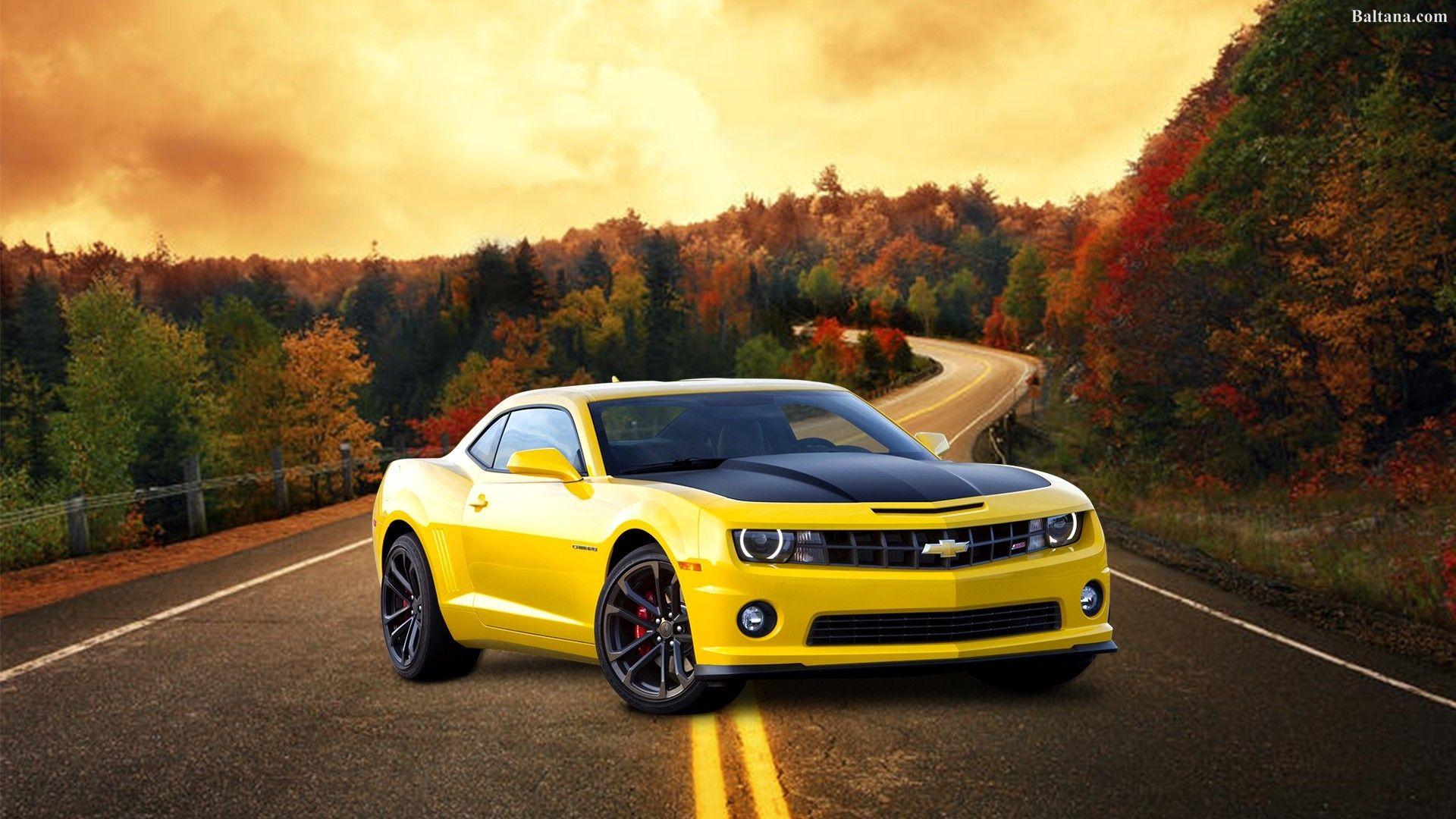
4. **Chevrolet Vega (1971-1977)**The Chevrolet Vega, produced between 1971 and 1977, is a model that, in the eyes of many automotive experts, represents a litany of engineering missteps and durability concerns. Joe Giranda minces no words in his assessment, declaring that “The 1971 to 1977 Chevrolet Vega is, in most circles, considered a disaster waiting to happen.” Such a damning appraisal from an industry professional immediately flags the Vega as a problematic proposition for any classic car enthusiast looking for value or reliability.
Giranda detailed the core issues, explaining that “the aluminum engine is notorious for overheating and failing prematurely.” This fundamental flaw in the powertrain was a significant blow to the car’s reputation, leading to widespread dissatisfaction among owners and contributing to its rapid depreciation. An engine that can’t reliably perform its basic function renders the entire vehicle problematic, irrespective of other attributes. The decision to use an aluminum engine in this manner, without adequate cooling or block reinforcement, proved to be a critical engineering oversight.
Compounding these engine troubles were severe structural issues. Giranda added, “Add in rust problems and the low resale price, and it’s an even less appealing classic with expensive maintenance costs.” The Vega’s susceptibility to rust meant that even if an owner managed to keep the engine running, the body itself would quickly succumb to corrosion, further diminishing its appeal and increasing the financial burden of ownership. These combined factors—a notoriously unreliable engine, pervasive rust, and a subsequent low resale value—firmly establish the Chevrolet Vega as a classic car to avoid, a monument to how poor engineering and quality control can severely undermine a vehicle’s longevity and investment potential.
Car Model Information: 1976 Chevrolet Vega
Name: Chevrolet Vega
Caption: 1971 Chevrolet Vega
Aka: Vega 2300
Manufacturer: Chevrolet
Production: 1970–1977
ModelYears: 1971–1977
Assembly: Lordstown, Ohio
Predecessor: Chevrolet Corvair
Successor: Chevrolet Monza
Class: Subcompact car
BodyStyle: notchback,hatchback,station wagon,Panel van
Layout: FR layout
Platform: GM H platform (RWD)
Engine: {{cvt,2.3,L,cuin,0,Chevrolet 2300 engine
Transmission: manual transmission,4-speed manual,overdrive (mechanics),Torque-Drive 2-speed Powerglide requiring manual shifting,Powerglide,Turbo-Hydramatic
Wheelbase: cvt
Length: cvt
Width: cvt
Height: cvt
Weight: cvt
Related: Pontiac Astre,Chevrolet Monza,Pontiac Sunbird#First generation (1976–1980),Buick Skyhawk#First generation (1975–1980),Oldsmobile Starfire#Second generation (1975–1980)
Designer: Bill Mitchell (designer)
Categories: 1970s cars, All articles needing additional references, All articles with unsourced statements, Articles needing additional references from July 2023, Articles with short description
Summary: The Chevrolet Vega is a subcompact automobile manufactured and marketed by GM’s Chevrolet division from 1970 until 1977. Available in two-door hatchback, notchback, wagon, and sedan delivery body styles, all models were powered by an inline four-cylinder engine designed specifically for the Vega, with a lightweight aluminum alloy cylinder block. The Vega first went on sale in Chevrolet dealerships on September 10, 1970. Variants included the Cosworth Vega, a short-lived limited-production performance version introduced spring 1975.
The Vega received the 1971 Motor Trend Car of the Year. Subsequently, the car became widely known for a range of problems related to its engineering, reliability, safety, propensity to rust, and engine durability. Despite numerous recalls and design upgrades, Vega’s problems tarnished its reputation and that of General Motors. Production ended with the 1977 model year.
The car was named for Vega, the brightest star in the constellation Lyra.
Get more information about: Chevrolet Vega
Buying a high-performing used car >>>
Brand: Chevrolet Model: Vega
Price: $30,000 Mileage: 82,344 mi.
Read more about: The Road to Ruin: 12 High-Performance Cars That Drove Straight into Disaster and Became Automotive Nightmares

5. **1985 Cadillac Cimarron**In 1985, Cadillac made a bold, albeit ultimately disastrous, attempt to enter the compact luxury market with the Cimarron. This venture, however, was fundamentally flawed in its execution, quickly becoming a symbol of badge engineering gone wrong. As described in the context, the 1985 Cadillac Cimarron was “Essentially a rebadged Chevrolet Cavalier.” This critical fact immediately undermined any claim to luxury or exclusivity, as consumers were asked to pay a premium for what was, at its core, an economy car with minimal upgrades.
The Cimarron offered very little to justify its Cadillac badge or its elevated price point. Its 2.8L V6 engine produced only 125 horsepower, a figure that was wholly inadequate for a luxury vehicle, failing to deliver the performance expected from the brand. Furthermore, the car was “criticized for its poor build quality and lackluster design.” Cadillac’s strategy was to take a budget platform and simply add a few amenities and a Cadillac grille, resulting in a vehicle that satisfied neither the expectations of luxury buyers nor the performance demands of the market.
Consequently, the Cimarron holds remarkably little value in the classic car market today. Its failure was not just a matter of poor sales; it was a profound blow to Cadillac’s reputation, demonstrating a lack of understanding of what defines true luxury and performance. The car’s inherent mediocrity and the transparent attempt to rebrand a humble compact into a luxury offering sealed its fate. For collectors, the 1985 Cadillac Cimarron stands as a testament to misguided product planning, serving as an emblem of what not to do in the automotive industry and certainly not a classic worth investing in.
Read more about: Beyond the Hype: 14 Unsung Automotive Icons That Defy Demolition and Redefine Longevity

6. **1974 AMC Gremlin**The 1974 AMC Gremlin stands out as one of those classic cars whose quirky design, while perhaps endearing to some, has ultimately prevented it from becoming a valuable collector’s item. Designed as a compact, economical car, the Gremlin represented AMC’s unique approach to the market. However, its aesthetic, characterized by a truncated rear end and distinctive proportions, has not aged gracefully in the broader automotive landscape. As the context notes, its “quirky design and underwhelming performance have not aged well,” relegating it more to the status of a curiosity than a prized classic.
Underneath its polarizing exterior, the Gremlin’s mechanical package offered little to inspire confidence or enthusiasm. The 1974 model typically featured a 3.8L inline-six engine that managed to produce a mere 100 horsepower. This power output was considered modest even for its era, contributing to a driving experience that was far from dynamic. Performance, a key metric for automotive enthusiasts, was simply not a strong suit of the Gremlin, further diminishing its appeal for anyone seeking a classic with engaging driving dynamics.
Beyond its distinctive looks and modest power, the Gremlin was also “often criticized for its poor build quality and lack of refinement.” These issues meant that the ownership experience was frequently plagued by the typical problems associated with less meticulously engineered vehicles. While its uniqueness might garner a second glance, its fundamental shortcomings in performance, build quality, and lasting aesthetic appeal mean that the 1974 AMC Gremlin remains more of a historical footnote than a coveted classic. It’s a car that evokes nostalgia for a certain era, but rarely inspires the kind of investment fervor seen with truly great automotive designs.
Read more about: Seven American Icons: The Surprising Truth About Their High Maintenance Demands Today
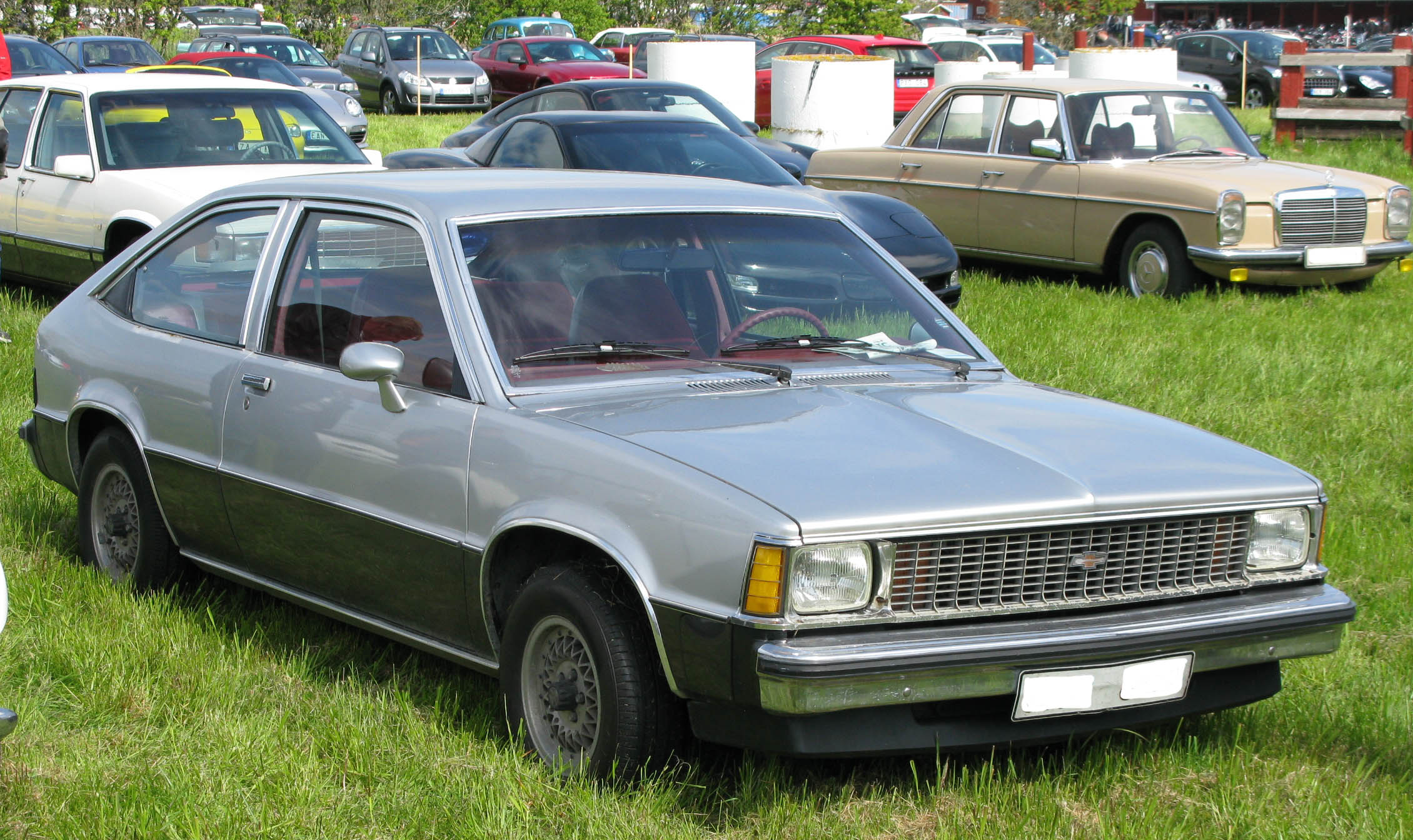
7. **1980 Chevrolet Citation**The 1980 Chevrolet Citation holds a rather infamous place in automotive history as one of General Motors’ early forays into front-wheel-drive cars, and unfortunately, it became a symbol of the challenges and pitfalls associated with such a transition. While innovative for its time, the Citation was “plagued by recalls and quality issues” from the outset, severely tarnishing its reputation and making it a particularly undesirable classic car today.
From an engineering standpoint, the Citation’s performance was far from stellar. Its 2.8L V6 engine produced 115 horsepower, which was acceptable for a compact car of that period, but its overall driving dynamics left much to be desired. The car “suffered from poor handling and frequent mechanical problems,” turning daily driving into a frustrating experience for many owners. These persistent issues meant that the car spent more time in repair shops than on the road, accruing expensive maintenance costs that quickly outweighed any perceived initial savings or convenience.
The cumulative effect of these reliability and quality control woes was a profound and lasting negative perception. The context explicitly states, “The Citation’s reputation for unreliability has made it an undesirable classic.” Unlike some vehicles that develop a cult following despite their flaws, the Citation’s litany of issues was too pervasive and fundamental to overcome. For anyone considering a classic car investment, the 1980 Chevrolet Citation serves as a stark warning: a car that was unreliable when new is unlikely to become a dependable or valuable asset decades later. It’s a reminder that not all pioneering designs are successful, and some simply don’t deserve a second look from serious collectors.
Having dissected the initial set of vehicles that, despite their classic status, fail to meet the bar for a worthwhile investment, our journey through the annals of automotive history continues. The narratives surrounding these cars are often complex, interwoven with design ambition, market pressures, and engineering realities that ultimately led to their diminished value. Our expert-backed analysis now turns to another collection of vehicles whose perceived worth frequently outstrips their tangible attributes, revealing further examples of why caution is paramount in the classic car market.
Read more about: 12 Must-See SUV Launches of 2025: Your Comprehensive MotorTrend Buyer’s Guide
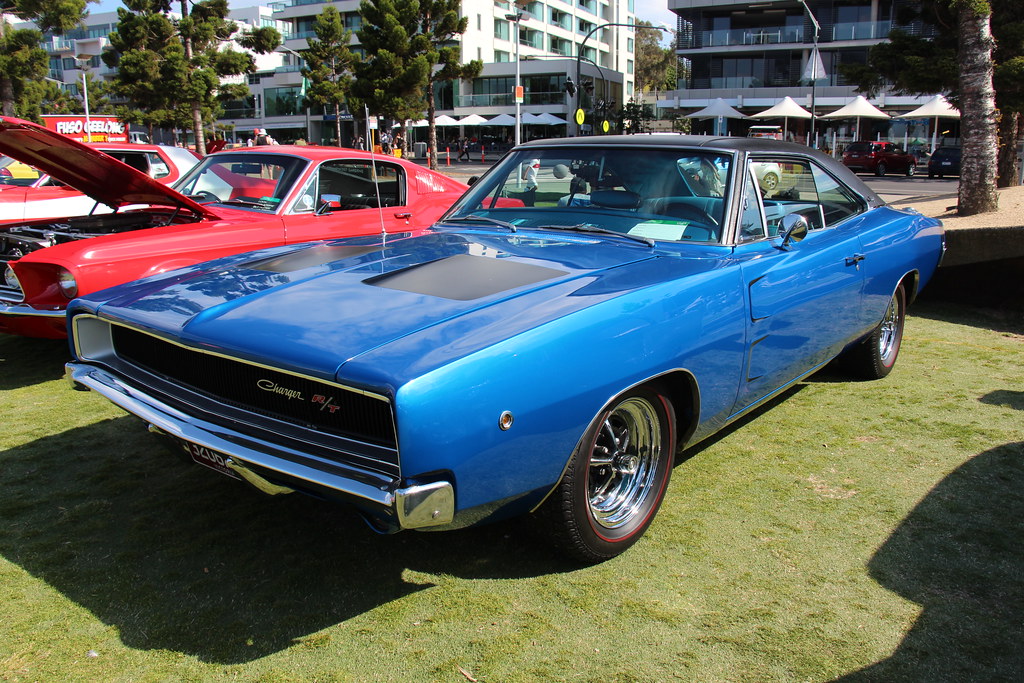
8. **1968 Dodge Charger R/T**The 1968 Dodge Charger R/T is undoubtedly an icon, a true symbol of American muscle cars that evokes powerful imagery and stirs the soul of many enthusiasts. Its aggressive styling, including the distinctive hidden headlights and ‘kick-up’ rear spoiler, combined with potent V8 engines, cemented its legendary status in pop culture and on the drag strip. However, as alluring as its image may be, the R/T variant from 1968, in particular, raises significant questions regarding its investment value today, especially when viewed through the cold lens of financial scrutiny.
Automotive expert Evaldas Zabitis from carVertical offers a stark perspective on this celebrated model. While acknowledging that these Chargers “look and run great,” he critically asserts that they “aren’t four times better than, let’s say, the 1971 Dodge Demon, which costs four times less.” This comparative analysis points to a crucial disconnect between the car’s current market price and its actual, incremental value compared to other less expensive, yet still potent, muscle car alternatives. The enthusiast’s heart might pound, but the wallet should remain firmly closed.
Zabitis concludes his assessment with a clear warning: “Right now, these Chargers are overpriced, making them a risky asset for collectors and out of reach for regular car enthusiasts.” This inflated valuation is often driven by a potent mix of nostalgia and media portrayal, rather than an objective assessment of its intrinsic worth or performance differentiation in today’s market. For those seeking genuine value, the financial premium attached to the 1968 Dodge Charger R/T positions it as a classic to approach with extreme caution, prioritizing smart investment over romanticized legend.
Car Model Information: 2023 Dodge Charger SRT Hellcat Widebody Jailbreak
Name: Dodge Charger
Caption: 1969 Dodge Charger
Manufacturer: Dodge
Production: 1966–1978,1981–1987,2005–present
ModelYears: 1966–1978,1982–1987,2006–present
Categories: 1960s cars, 1970s cars, 1980s cars, 2000s cars, 2010s cars
Summary: The Dodge Charger is a model of automobile marketed by Dodge in various forms over eight generations since 1966.
The first Charger was a show car in 1964. A 1965 Charger II concept car resembled the 1966 production version.
In the United States, the Charger nameplate has been used on mid-size cars, personal luxury coupes, subcompact hatchbacks, and full-size sedans.
Get more information about: Dodge Charger
Buying a high-performing used car >>>
Brand: Dodge Model: Charger
Price: $94,975 Mileage: 4,260 mi.
Read more about: The Ultimate Air Intake: 11 Classic Cars That Flaunted the Hood Scoop Look
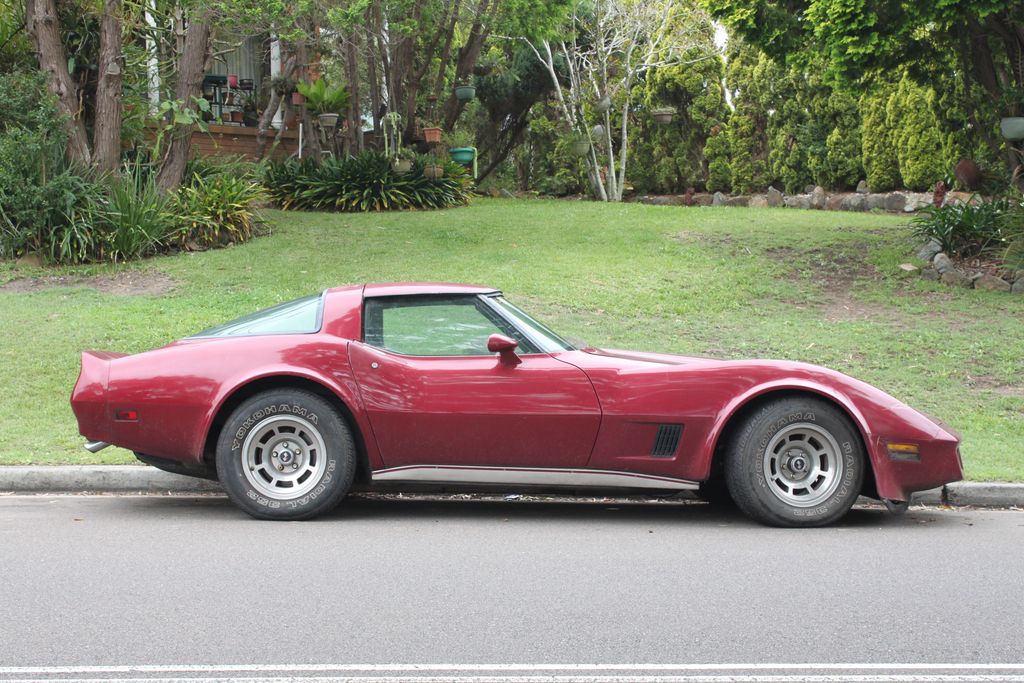
9. **1980 Chevrolet Corvette**The Chevrolet Corvette, America’s quintessential sports car, has a storied lineage, yet not all chapters are equally revered. The 1980 model year, specifically, represents a period where external pressures significantly hampered what should have been an exhilarating machine. During this era, stringent emissions regulations cast a long shadow over automotive performance, forcing manufacturers to de-tune engines in pursuit of compliance. This compromise proved particularly detrimental to the Corvette’s reputation, fundamentally altering its performance profile.
At the heart of the 1980 Corvette’s diminished appeal was its powertrain. The 305-cubic-inch V8 engine, instead of delivering the thunderous power expected from a Corvette, managed to produce a mere 180 horsepower. This figure was a “far cry from the power and excitement that Corvettes were known for,” instantly making it less desirable than its predecessors and even some contemporary rivals. The essence of a true sports car—raw power and thrilling acceleration—was significantly diluted, leaving many enthusiasts feeling underwhelmed by the driving experience.
Beyond the engine’s struggles, the overall design and build quality of the 1980 Corvette also “lagged,” failing to inspire the confidence or admiration typically associated with the marque. While the C3 generation’s aesthetic had its admirers, the internal compromises and production choices of this particular year detracted from its long-term collector appeal. Consequently, for those evaluating classic car investments, the 1980 Chevrolet Corvette stands as a testament to an era of forced compromise, diminishing its standing among its more celebrated siblings and rendering it a less appealing choice for serious collectors.
Car Model Information: 2004 Chevrolet Corvette Base
Name: Chevrolet Corvette
Caption: 2021 Chevrolet Corvette C8
Manufacturer: Chevrolet
Production: 1953–present
ModelYears: bulleted list
Assembly: bulleted list
Class: Sports car
BodyStyle: coupé
Layout: Front-engine, rear-wheel-drive layout,Rear mid-engine, rear-wheel-drive layout
Categories: 1950s cars, 1960s cars, 1970s cars, 1980s cars, 1990s cars
Summary: The Chevrolet Corvette is a line of American two-door, two-seater sports cars manufactured and marketed by General Motors under the Chevrolet marque since 1953. Throughout eight generations, indicated sequentially as C1 to C8, the Corvette is noted for its performance, distinctive styling, lightweight fiberglass or composite bodywork, and competitive pricing. The Corvette has had domestic mass-produced two-seater competitors fielded by American Motors, Ford, and Chrysler; it is the only one continuously produced by a United States auto manufacturer. It serves as Chevrolet’s halo car.
In 1953, GM executives accepted a suggestion by Myron Scott, then the assistant director of the Public Relations department, to name the company’s new sports car after the corvette, a small, maneuverable warship. Initially, a relatively modest, lightweight 6‑cylinder convertible, subsequent introductions of V8 engines, competitive chassis innovations, and rear mid-engined layout have gradually moved the Corvette upmarket into the supercar class. In 1963, the second generation was introduced in coupe and convertible styles. The first three Corvette generations (1953–1982) employed body-on-frame construction, and since the C4 generation, introduced in 1983 as an early 1984 model, Corvettes have used GM’s unibody Y‑body platform. All Corvettes used front mid-engine configuration for seven generations, through 2019, and transitioned to a rear mid-engined layout with the C8 generation.
Initially manufactured in Flint, Michigan, and St. Louis, Missouri, the Corvette has been produced in Bowling Green, Kentucky, since 1981, which is also the location of the National Corvette Museum. The Corvette has become widely known as “America’s Sports Car.” Automotive News wrote that after being featured in the early 1960s television show Route 66, “the Corvette became synonymous with freedom and adventure,” ultimately becoming both “the most successful concept car in history and the most popular sports car in history.”
Get more information about: Chevrolet Corvette
Buying a high-performing used car >>>
Brand: Chevrolet Model: Corvette
Price: $21,990 Mileage: 29,579 mi.
Read more about: Smart Wheels, Golden Years: 14 Cars Middle-Class Retirees Must Steer Clear Of to Protect Their Nest Egg
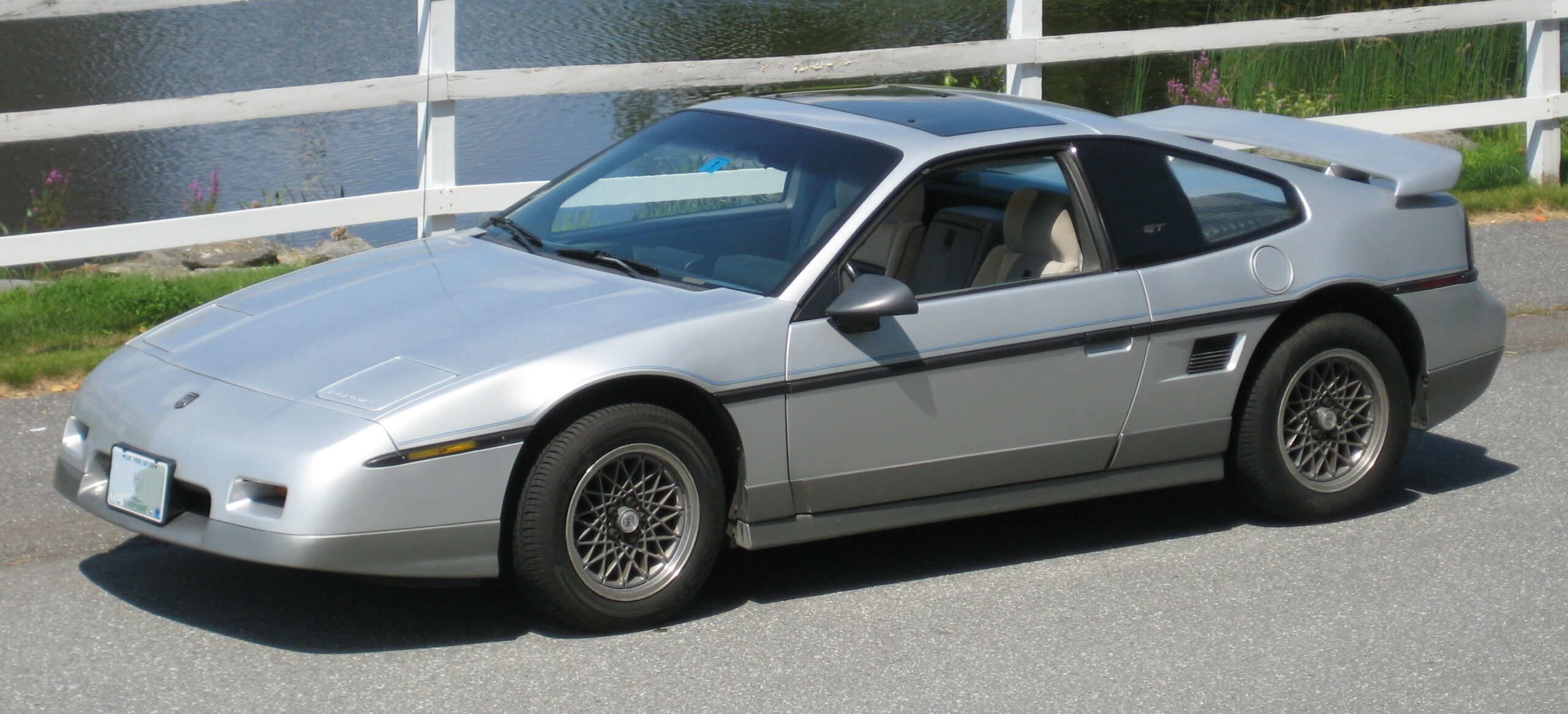
10. **1987 Pontiac Fiero**The 1987 Pontiac Fiero arrived with a bold vision: an affordable, mid-engine American sports car designed to challenge European exotics. Its innovative layout and sleek, wedge-shaped aesthetics were certainly eye-catching, representing a significant departure for General Motors. However, beneath the surface of this ambitious design, the Fiero quickly developed a notorious reputation that would ultimately plague its legacy and significantly erode its value in the classic car market.
Despite its sporty appearance, the 1987 Pontiac Fiero was “plagued by reliability issues and a lack of performance” that contradicted its athletic pretensions. The mid-engine configuration, while revolutionary for an American mass-market car, was often implemented with cost-cutting measures that led to compromised engineering. The 2.8L V6 engine, producing only 140 horsepower, was not only underwhelming for a supposed sports car but was also “prone to engine fires and other mechanical problems,” creating a genuine safety concern for owners.
These significant mechanical shortcomings, coupled with early models being “especially plagued with poor build quality,” irrevocably tarnished the Fiero’s image. The promise of an exciting, accessible sports car was overshadowed by a litany of headaches and safety risks. While some enthusiasts appreciate the Fiero’s unique place in automotive history, its deep-seated reliability problems and performance deficits mean it remains a classic more admired for its concept than its execution. For collectors, the ongoing hassle and potential dangers make the 1987 Pontiac Fiero a proposition best avoided.
Car Model Information: 1988 Pontiac Fiero Formula
Name: Pontiac Fiero
Caption: 1988 Fiero Formula
Manufacturer: Pontiac (automobile)
Production: August 1983 – August 16, 1988,370,168 produced
ModelYears: 1984 – 1988
Successor: Pontiac Solstice
Assembly: Pontiac, Michigan
Designer: Hulki Aldikacti,George Milidrag
Class: Sports car
BodyStyle: fastback,notchback
Platform: GM P platform
Layout: Rear mid-engine, rear-wheel-drive layout
Engine: {{cvt,151,CID,L,1,disp=flip,Iron Duke engine#LR8,Inline-four engine
Transmission: Turbo-Hydramatic 125,Manual transmission,Getrag 282 transmission,Isuzu
Wheelbase: 2373 mm
Abbr: on
Length: 4072 mm
Width: 1750 mm
Height: 1191 mm
Weight: 1116 to
Categories: All articles with unsourced statements, Articles with short description, Articles with unsourced statements from February 2012, Articles with unsourced statements from July 2024, Articles with unsourced statements from September 2011
Summary: The Pontiac Fiero is a rear mid-engine, light sports car manufactured and marketed by Pontiac for model years 1984 – 1988. Intended as an economical commuter car with modest performance aspirations, it was Pontiac’s first two-seater since their 1926 to 1938 coupes, and the first mass-produced, rear mid-engine car by any American manufacturer.
In addition to using 4- and 6-cylinder engines to help Pontiac meet America’s ‘CAFE’ average fuel economy requirements, the Fiero’s chassis and structure technology used non-load-bearing, composite body-panels, contributing to the car’s light-weight and its unique selling proposition. Pontiac engineers modified the design over its life to enhance its performance and reposition the two-seater closer to the implications of its sporty configuration.
The Fiero 2M4 (two-seat, mid-engine, four-cylinder) placed on Car and Driver magazine’s Ten Best list for 1984, and was the Official Pace Car of the Indianapolis 500 for 1984.
A total of 370,168 Fieros were manufactured over five years’ production, its mild performance, reliability and safety issues becoming points of criticism. The Fiero was discontinued after annual sales fell steadily.
Get more information about: Pontiac Fiero
Buying a high-performing used car >>>
Brand: Pontiac Model: Fiero
Price: $11,000 Mileage: 101,027 mi.
Read more about: Gone Too Soon: 12 Iconic Cars That Were Discontinued Before Their Time

11. **1981 Dodge Mirada**The 1981 Dodge Mirada was Chrysler’s attempt to carve out a niche in the personal luxury coupe market, aiming to combine a sense of style with a comfortable cruising experience. Designed to be an aspirational vehicle, it presented a formal, somewhat angular aesthetic typical of its early 1980s contemporaries. Yet, despite its positioning and marketing efforts, the Mirada ultimately “failed to deliver on performance and style,” cementing its place as a classic car that offers little in return for an investment today.
A significant detractor from the Mirada’s appeal was its underwhelming performance. Equipped with a 5.2L V8 engine, it could muster a mere 130 horsepower, a figure that was decidedly unimpressive even for its era, especially for a car attempting to project a luxurious and capable image. This lack of power meant the driving experience was far from engaging, a critical flaw for a car intended to be a personal statement. It struggled to stand out in a competitive segment where performance, even for luxury cruisers, was becoming an increasingly important metric.
Adding to its woes, the Mirada was “criticized for its bland design and lack of innovation.” While aiming for elegance, its styling often came across as derivative and uninspired, failing to create a lasting visual impression or evoke a sense of desirability. This combination of an unexciting powertrain and an unremarkable aesthetic resulted in a car that quickly faded into obscurity. The Mirada’s pronounced “lack of desirability has resulted in low resale values,” making it a clear example of a classic car that, despite its initial intentions, simply isn’t worth the investment for those seeking appreciation or genuine automotive distinction.

12. **1976 Triumph TR7**The 1976 Triumph TR7 represented a radical departure for the British sports car manufacturer, moving away from the more traditional roadster aesthetics of its predecessors towards a bold, modern “wedge” design. Marketed as “the shape of things to come,” it aimed to revitalize Triumph’s image and capture a new generation of buyers. However, this controversial design, coupled with a litany of well-documented mechanical issues, ensured that the TR7’s future was far from glorious, severely undermining its value as a collectible classic.
From an engineering perspective, the TR7 was powered by a 2.0L inline-four engine producing 105 horsepower, a figure that was modest for a sports car and offered little in the way of exhilarating performance. Far more damaging to its reputation than its power output were the car’s pervasive quality control problems. The TR7 became “notorious for electrical problems and rust issues,” transforming the dream of open-top motoring into a recurring nightmare of breakdowns and costly repairs. These reliability concerns plagued the model throughout its production run, making ownership a frustrating experience.
These fundamental flaws—a polarizing design, underwhelming performance, and catastrophic reliability—have ensured that the 1976 Triumph TR7 has “not earned the nostalgic love other British classics have.” Its value in the classic car market remains stubbornly low, serving as a cautionary tale of ambitious design let down by poor execution and persistent manufacturing defects. For enthusiasts, the TR7 presents a “risky purchase” that promises more headaches than horsepower, firmly placing it on the list of classics that fail to justify their asking price, even if it seems a bargain.
Car Model Information: 1981 Triumph TR7
Sp: uk
Name: Triumph TR7
Caption: 1975 Triumph TR7
Production: unbulleted list
Manufacturer: Triumph Motor Company
Class: Sports car
Layout: FR layout
Predecessor: Triumph TR6
Transmission: unbulleted list
Related: Triumph TR8
Engine: unbulleted list
Abbr: on (coupé)
BodyStyle: unbulleted list
Wheelbase: 85 in
Length: 160 in
Width: 66.2 in
Weight: 1101 kg
Order: flip (coupé)
Height: 50 in
Assembly: unbulleted list
Designer: Harris Mann
Categories: 1980s cars, All Wikipedia articles written in British English, All articles with unsourced statements, Articles tagged with the inline citation overkill template from January 2024, Articles with short description
Summary: The Triumph TR7 is a sports car that was manufactured in the United Kingdom from September 1974 to October 1981 by British Leyland Motor Corporation (BLMC), which changed its name to British Leyland (BL) in 1975. The car was launched in the United States in January 1975, with its UK home market debut in May 1976. The UK launch was delayed at least twice because of high demand for the vehicle in the US, with final sales of new TR7s continuing into 1982.
It was initially produced at the Speke, Liverpool, factory, moving to Canley, Coventry, in 1978 and then finally to the Rover Solihull plant in 1980.
Get more information about: Triumph TR7
Buying a high-performing used car >>>
Brand: Triumph Model: TR7
Price: $12,000 Mileage: 83,693 mi.
Read more about: 15 Classic Cars You Might Want To Skip: An Expert Guide for Discerning Collectors
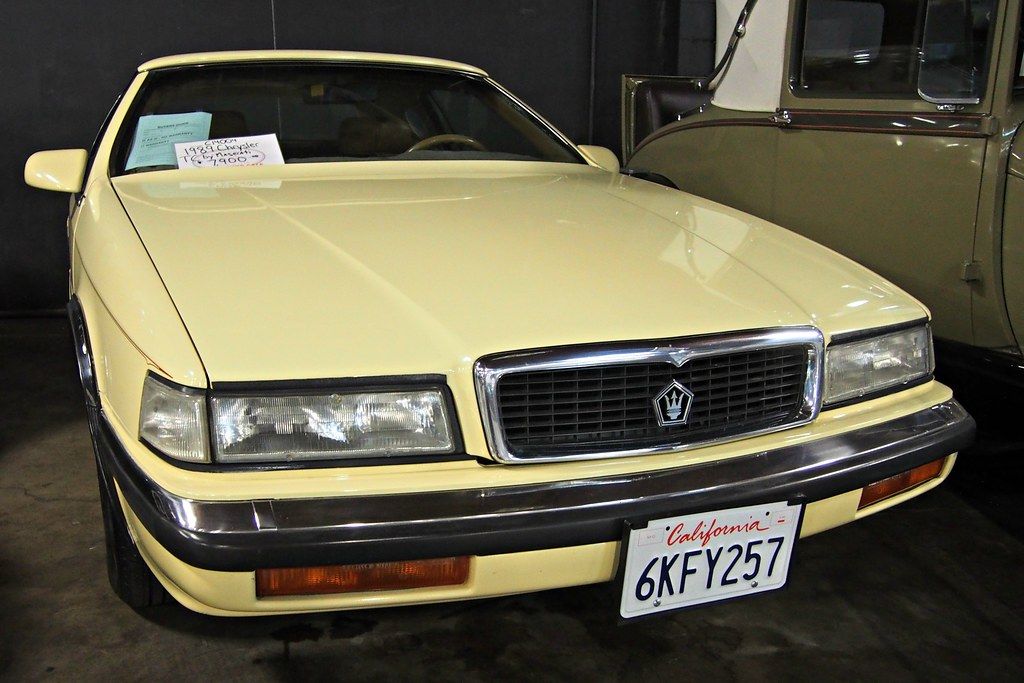
13. **1989 Chrysler TC by Maserati**The 1989 Chrysler TC by Maserati stands as a prime example of an ambitious automotive collaboration that, despite its high aspirations, ultimately failed to capture the imagination of the market or deliver on its promise. This joint venture between American practicality and Italian flair aimed to blend Chrysler’s accessible luxury with Maserati’s exotic appeal, resulting in a unique, limited-production convertible. However, this blend proved to be more confusing than compelling, leading to a vehicle that struggled to justify its existence and its hefty price tag.
Under the hood, the TC by Maserati was offered with a 2.2L turbocharged engine producing 160 horsepower, which, while respectable for a Chrysler, was far from the performance expected from a car bearing the prestigious Maserati badge. The fundamental issue was a profound identity crisis: it “lacked the performance and luxury expected from a Maserati,” yet its pricing placed it squarely in competition with genuinely premium European offerings. The result was a car that satisfied neither the American luxury buyer nor the discerning Italian sports car enthusiast.
Critically, the car’s “design was seen as uninspired,” failing to marry the distinctive elements of both brands into a cohesive and appealing aesthetic. The perception was often that buyers were paying a premium for a glorified K-car with some Italian flourishes, rather than a true luxury-performance machine. This combination of an inflated price, confused branding, and a lack of genuine innovation meant the TC “cost more than it delivered,” and today, it “offers little in return for collectors.” It remains a stark reminder that not all collaborations yield successful results, making the 1989 Chrysler TC by Maserati a classic that provides scant value for investment.
Car Model Information: 2022 Hyundai PALISADE Calligraphy
Name: Chrysler TC by Maserati
Manufacturer: Maserati,Chrysler (division)
Production: 1988–1990
ModelYears: 1989–1991
Class: Grand tourer
Layout: Front-engine, front-wheel-drive layout
Predecessor: Imperial (automobile)#Sixth generation (1981–1983)
Successor: Chrysler Crossfire
Platform: Chrysler Q platform
BodyStyle: convertible
Engine: Chrysler 2.2 & 2.5 engine#Turbo II,Chrysler 2.2 & 2.5 engine#TC,Mitsubishi 6G7 engine#6G72
Transmission: manual transmission,TorqueFlite,Ultradrive
Weight: 3033 lb
Abbr: on
Wheelbase: 93.3 in
Length: 175.8 in
Width: 68.5 in
Height: 51.9 in
Assembly: Torino,Sparone,Milan
Categories: 1990s cars, All articles with unsourced statements, Articles with short description, Articles with unsourced statements from August 2025, Articles with unsourced statements from March 2021
Summary: The Chrysler TC by Maserati is a two-passenger, two-door convertible jointly developed by Chrysler and Maserati. Introduced at the 1986 Los Angeles Auto Show., the TC was positioned as a grand tourer using a “Q” body on a modified second-generation Chrysler K platform. After two years of development delays, the TC became available in late-1988 and a total of 7,300 units (the minimum required under the contract) were manufactured in Milan, Italy, through 1990. All cars sold as 1991 models were manufactured in 1990.
Get more information about: Chrysler TC by Maserati
Buying a high-performing used car >>>
Brand: Chrysler Model: TC by Maserati
Price: $34,194 Mileage: 37,781 mi.
Read more about: Grab Life by the Wheel: The 10 Most Jaw-Dropping Steering Wheels Ever Made

14. **1980 Mercury Bobcat**The 1980 Mercury Bobcat occupies an unenviable position in automotive history, largely because it was, at its core, “essentially a rebadged Ford Pinto.” This immediately sets a troubling precedent, as the Pinto itself is infamous for a host of profound design and safety flaws that have indelibly stained its legacy. For the Bobcat, this badge engineering meant inheriting all of its predecessor’s fundamental shortcomings, making it a classic car that carries significant historical baggage and offers little in the way of a sound investment.
Like the Pinto, the 1980 Mercury Bobcat was typically powered by a 2.3L four-cylinder engine, producing a meager 88 horsepower. This powertrain offered an uninspiring driving experience, lacking both performance and refinement. More critically, the Bobcat was “plagued by the same safety and reliability issues as the Pinto,” most notably the highly publicized and dangerous design of its rear-mounted fuel tank. The risk of fuel tank rupture in rear-end collisions was a significant safety concern that simply could not be overlooked, casting a dark cloud over any variant of this platform.
Consequently, the 1980 Mercury Bobcat is not a sought-after classic. Its lack of original identity, coupled with the deeply entrenched negative reputation of its Ford sibling, means it possesses virtually no unique selling points for collectors. Instead, it serves as a stark reminder of a period where cost-cutting and rebadging without fundamental design improvements led to vehicles that were inherently flawed. For those in the classic car market, the Bobcat is a clear example of how a vehicle can be damned by association, ensuring it remains on the list of cars best left in the past.
Read more about: American Automotive Crossroads: 7 Overrated Cars and 7 Overlooked Gems That Defined Eras
Our extensive examination of these classic automobiles underscores a vital lesson for anyone venturing into the vintage car market: nostalgia alone is rarely a solid foundation for investment. While the romance of classic cars is undeniable, a truly discerning approach demands rigorous evaluation of engineering, reliability, market appeal, and expert opinion. The vehicles we’ve highlighted, from the infamously unreliable to the fundamentally overpriced, serve as powerful reminders that some classics are destined to remain more of a historical footnote than a treasured asset. For those passionate about automobiles, understanding these pitfalls ensures that your journey into classic car ownership is driven by informed decisions, rather than costly disappointments.

